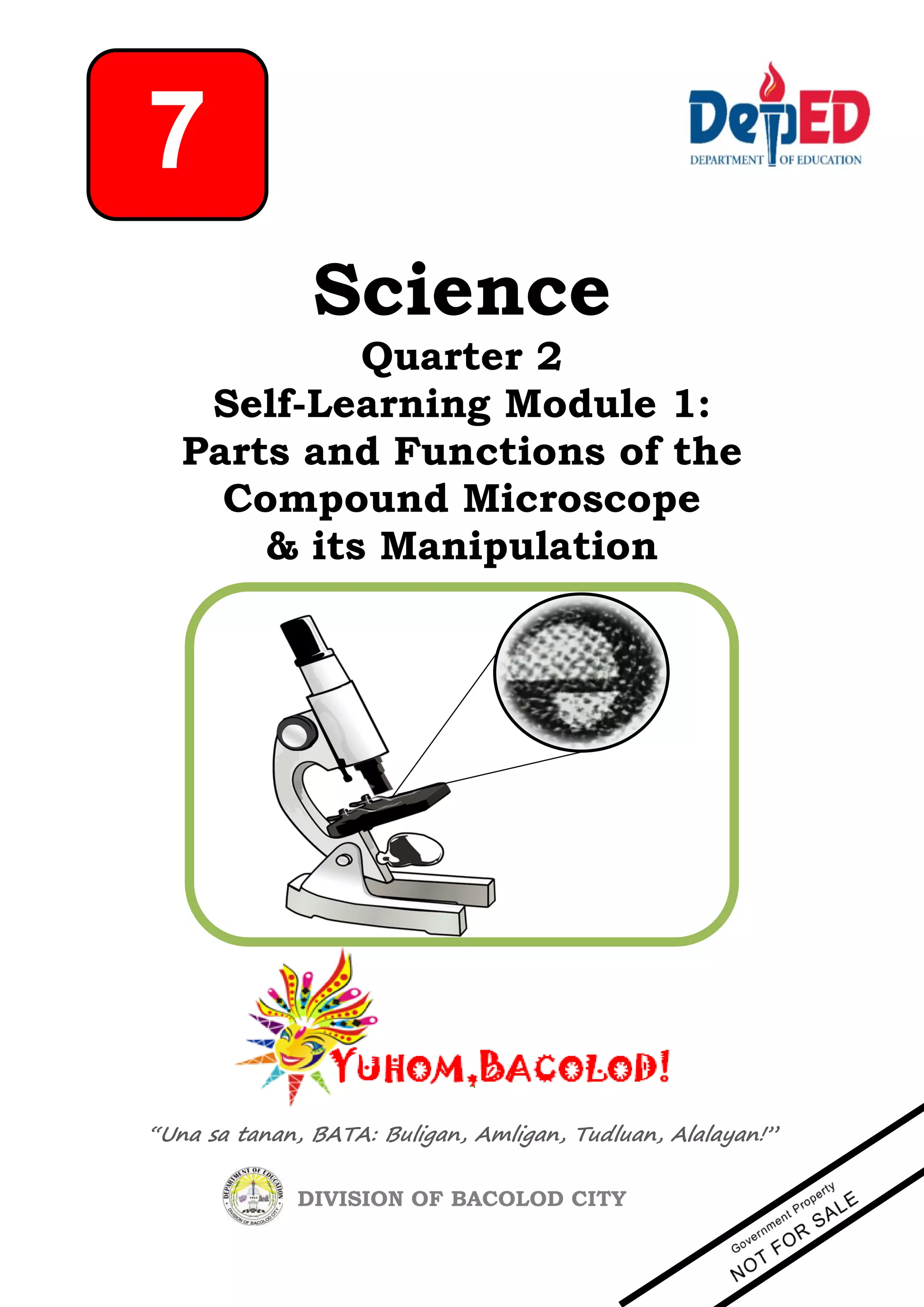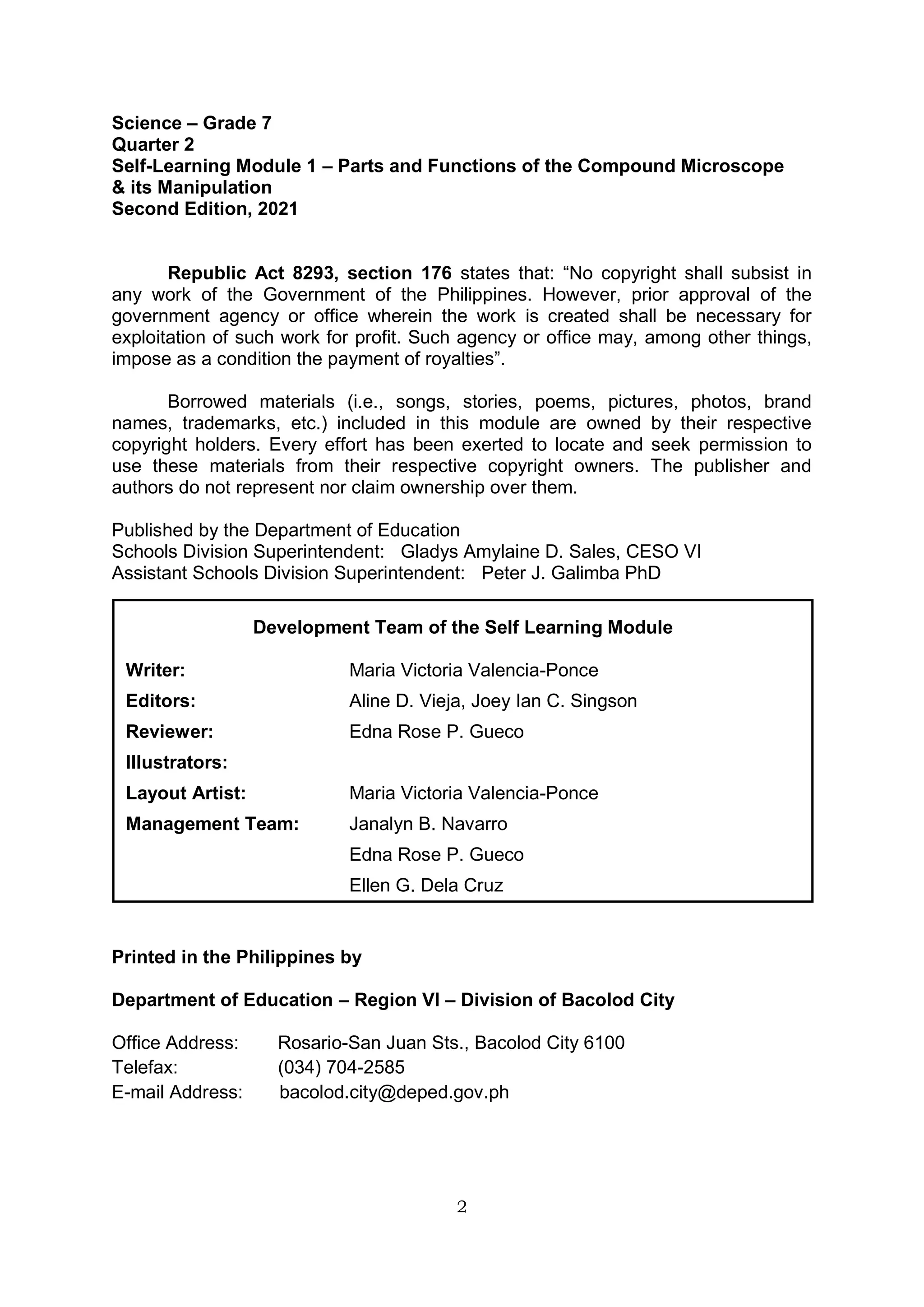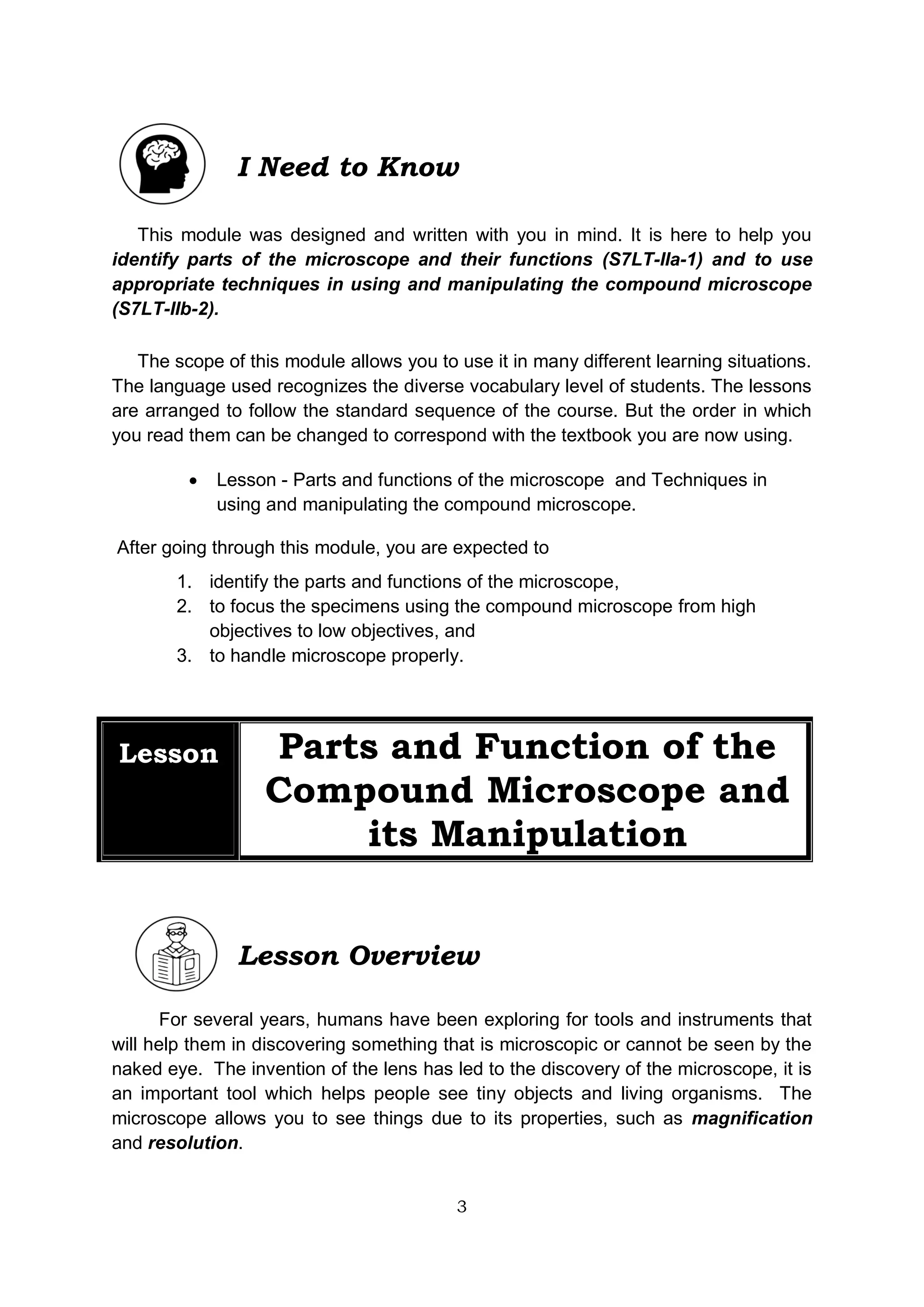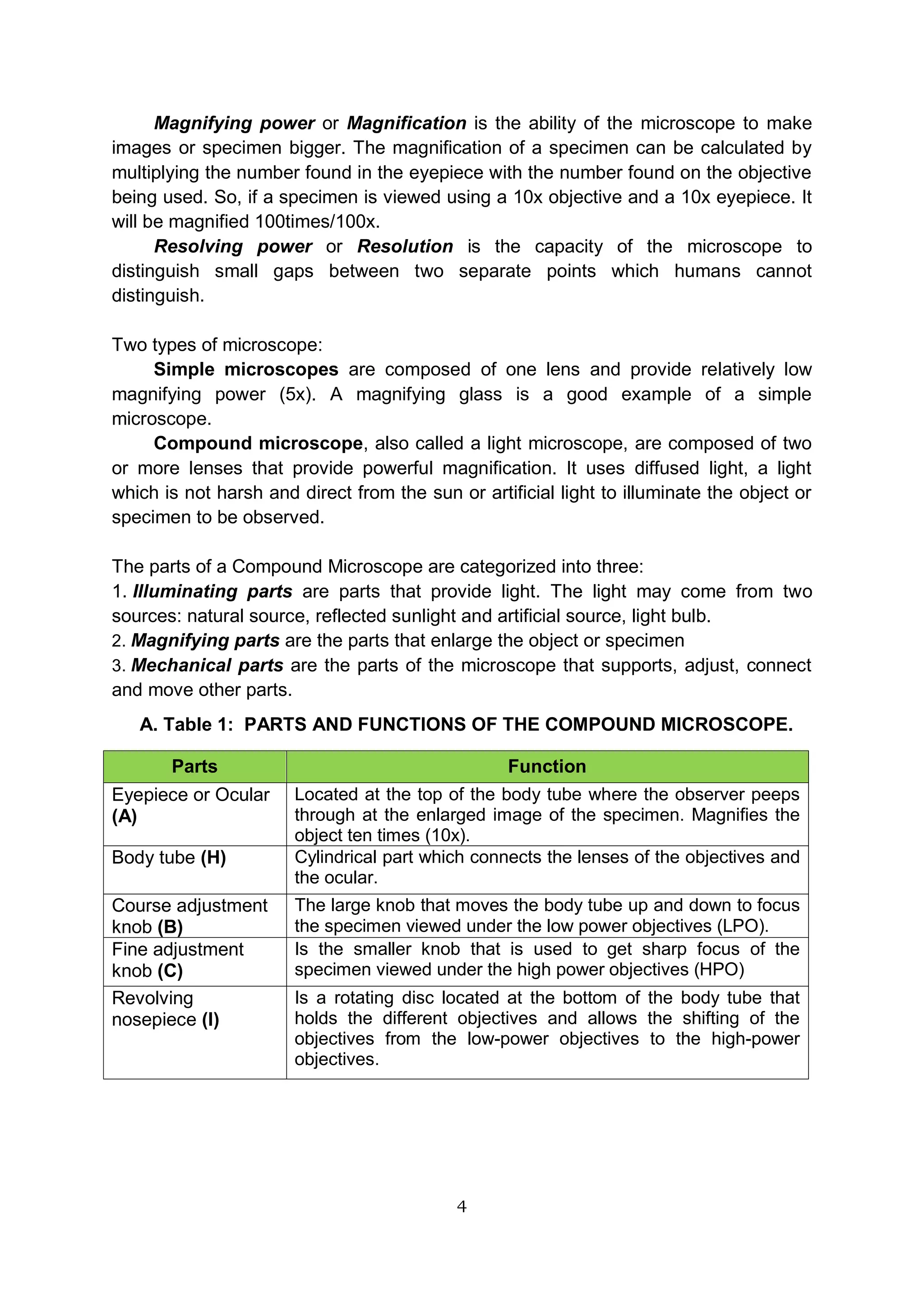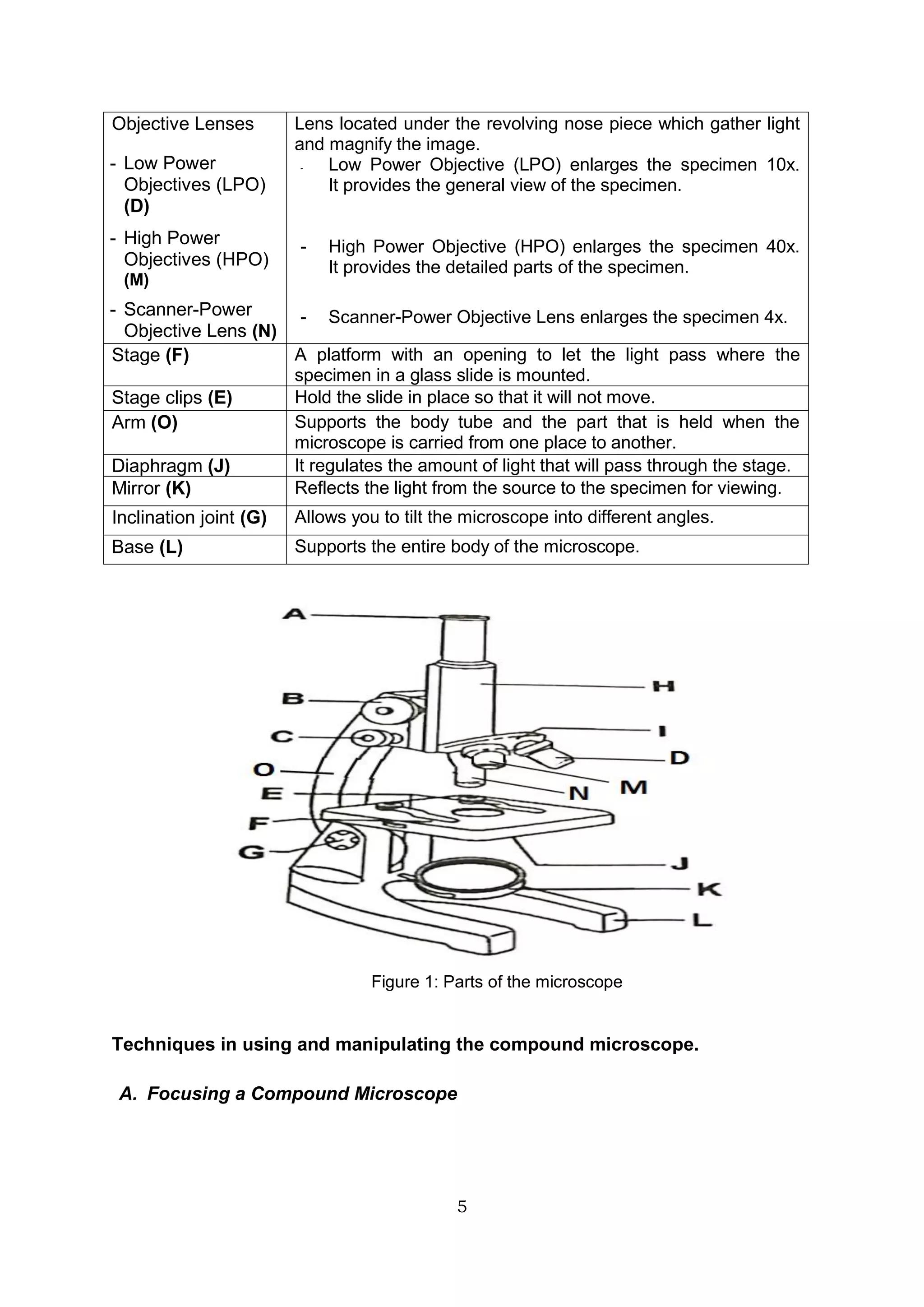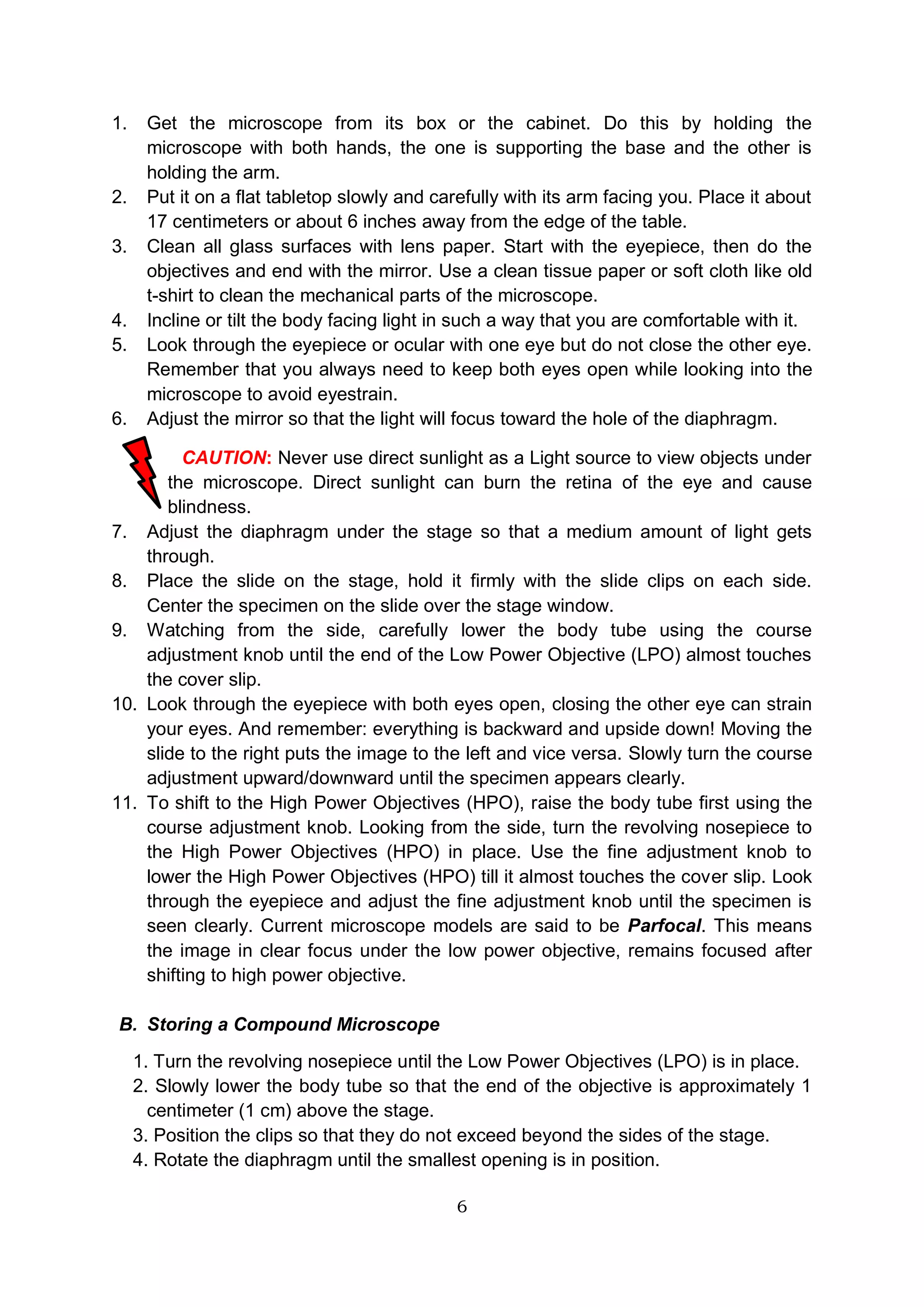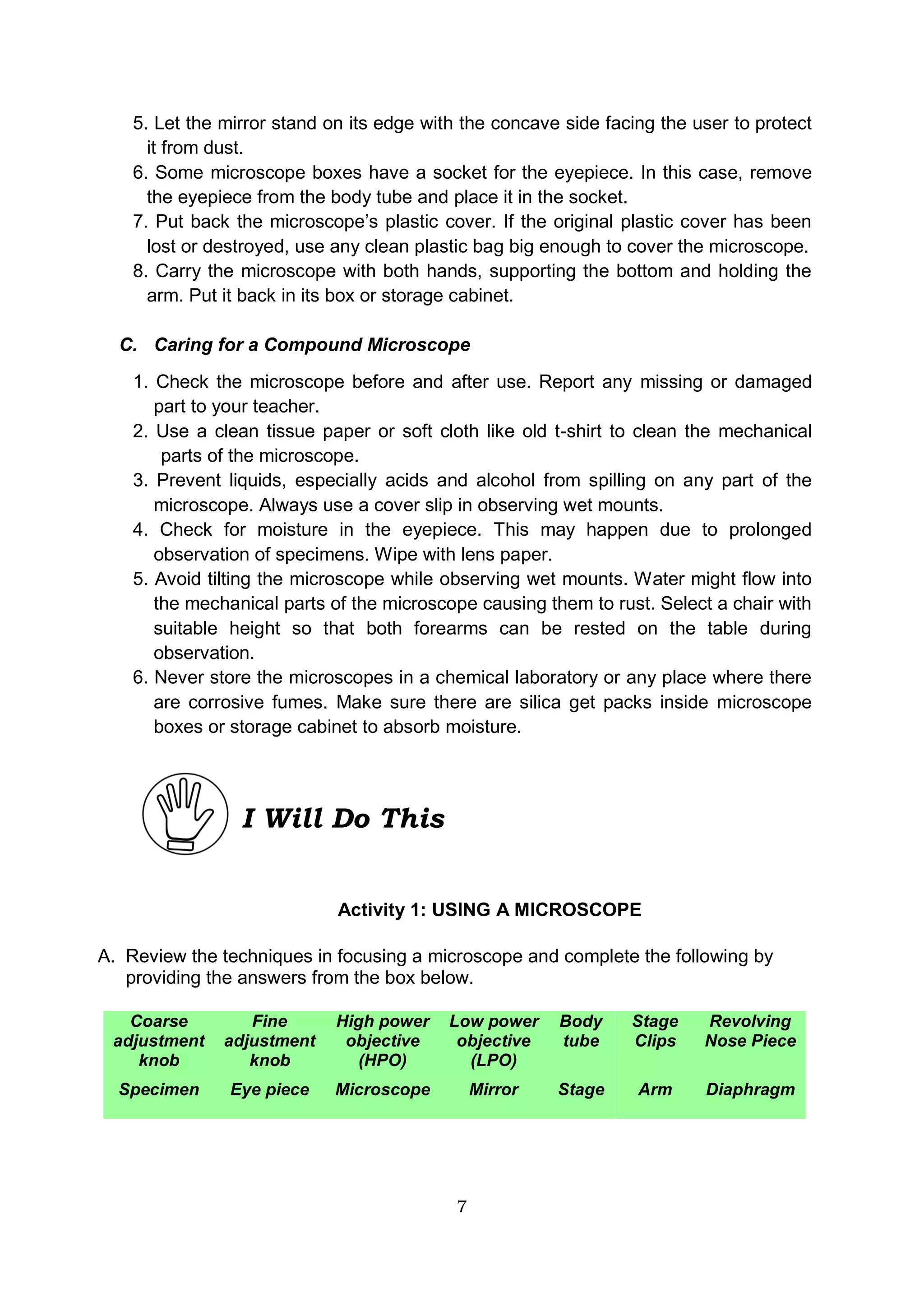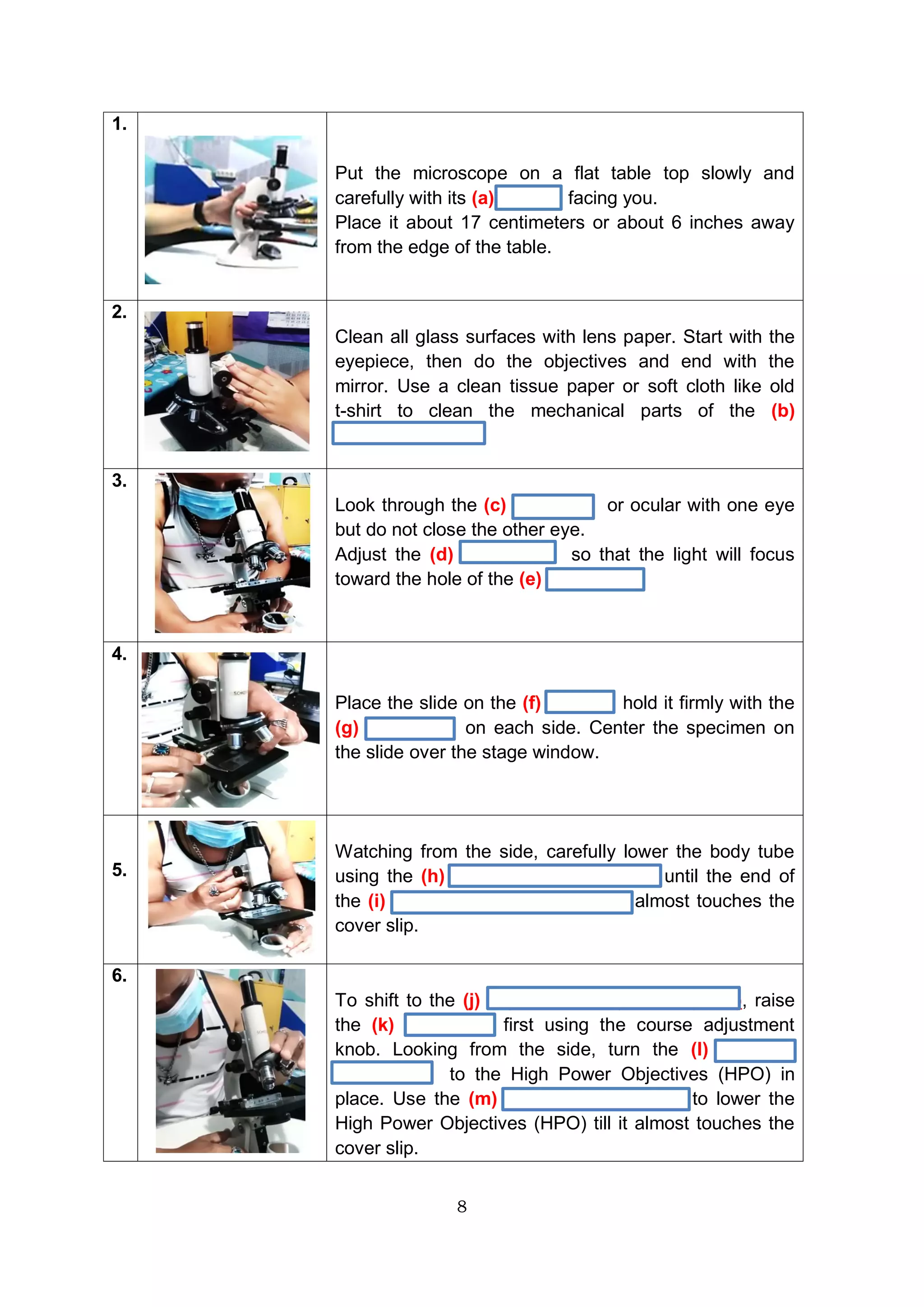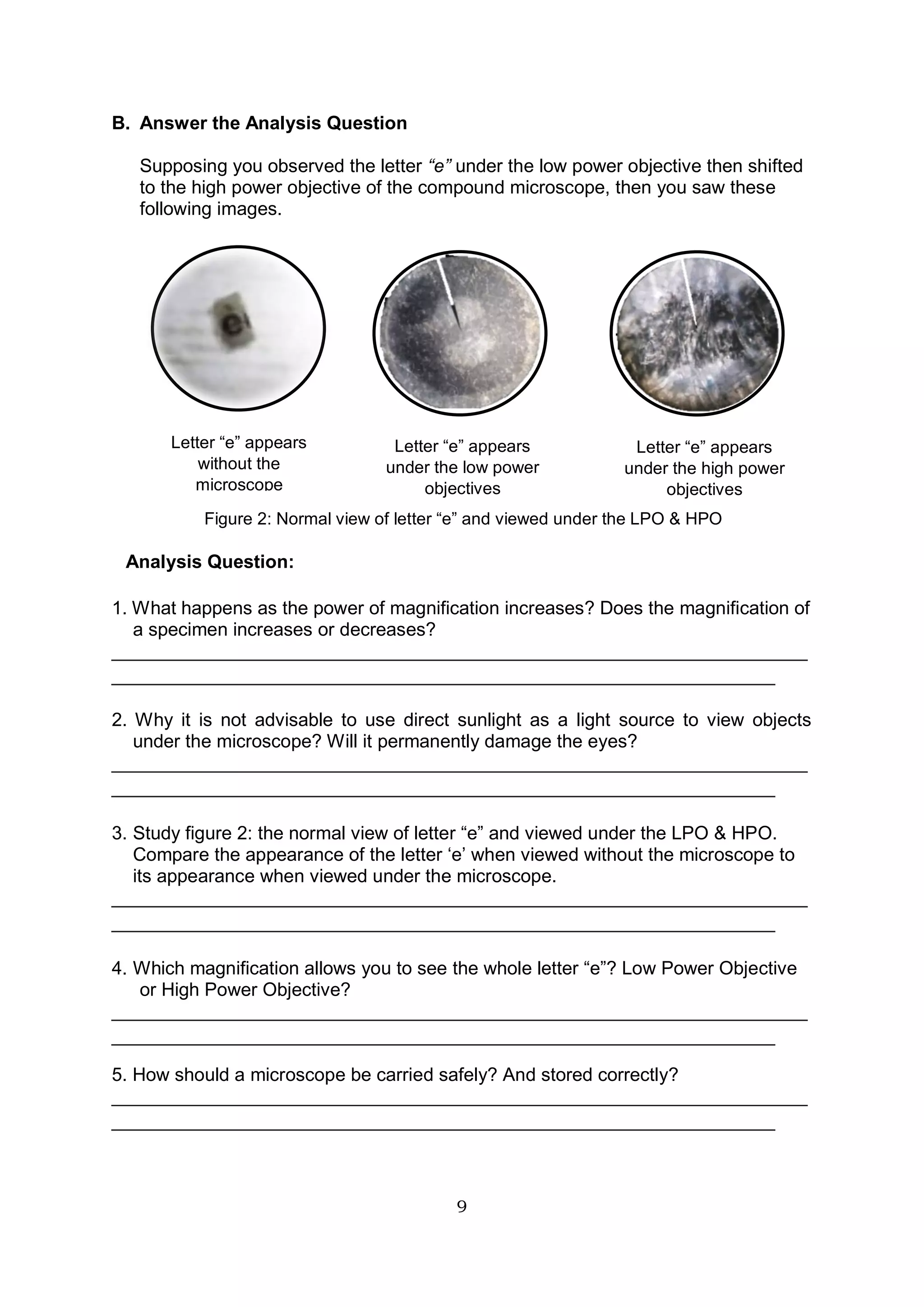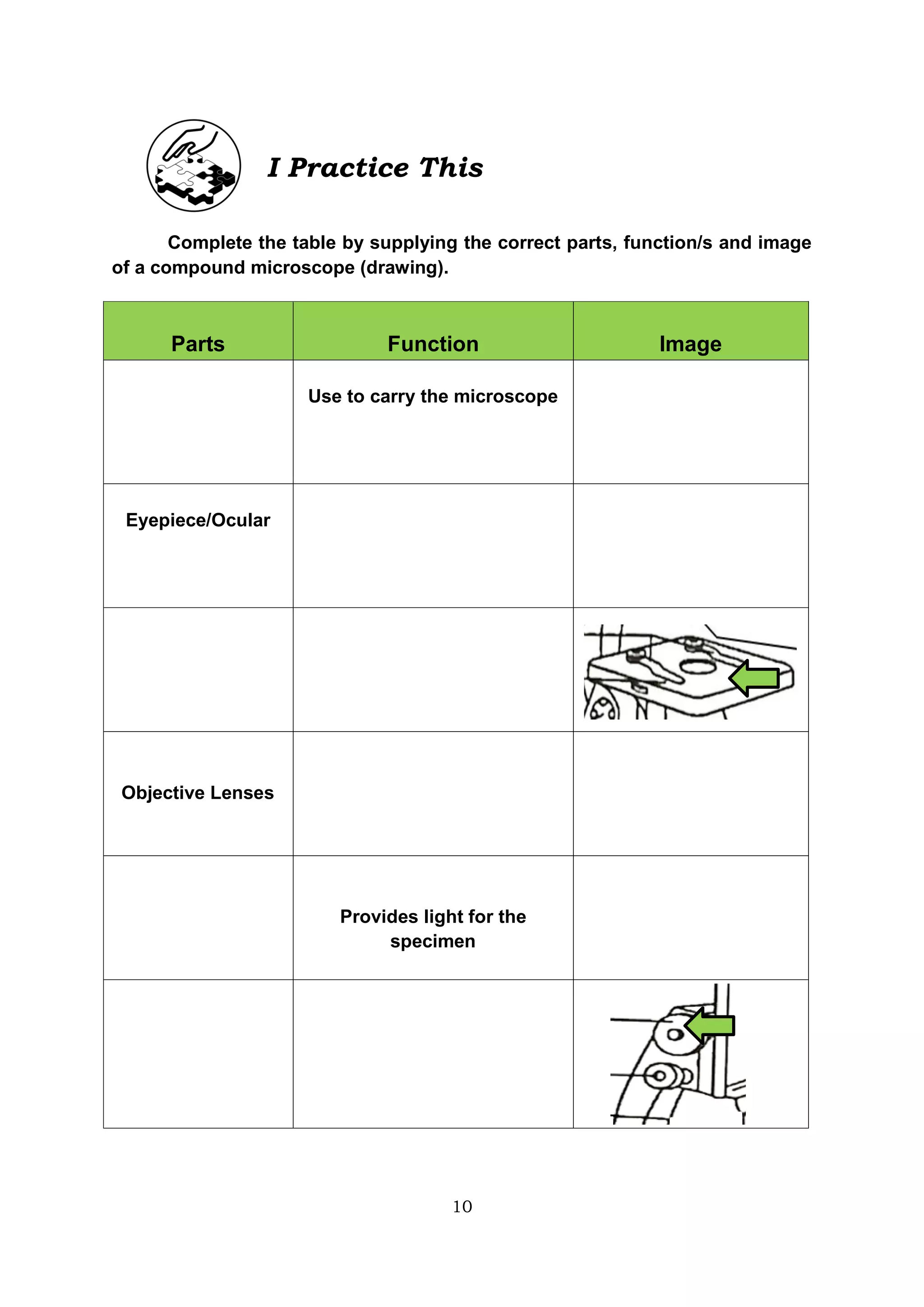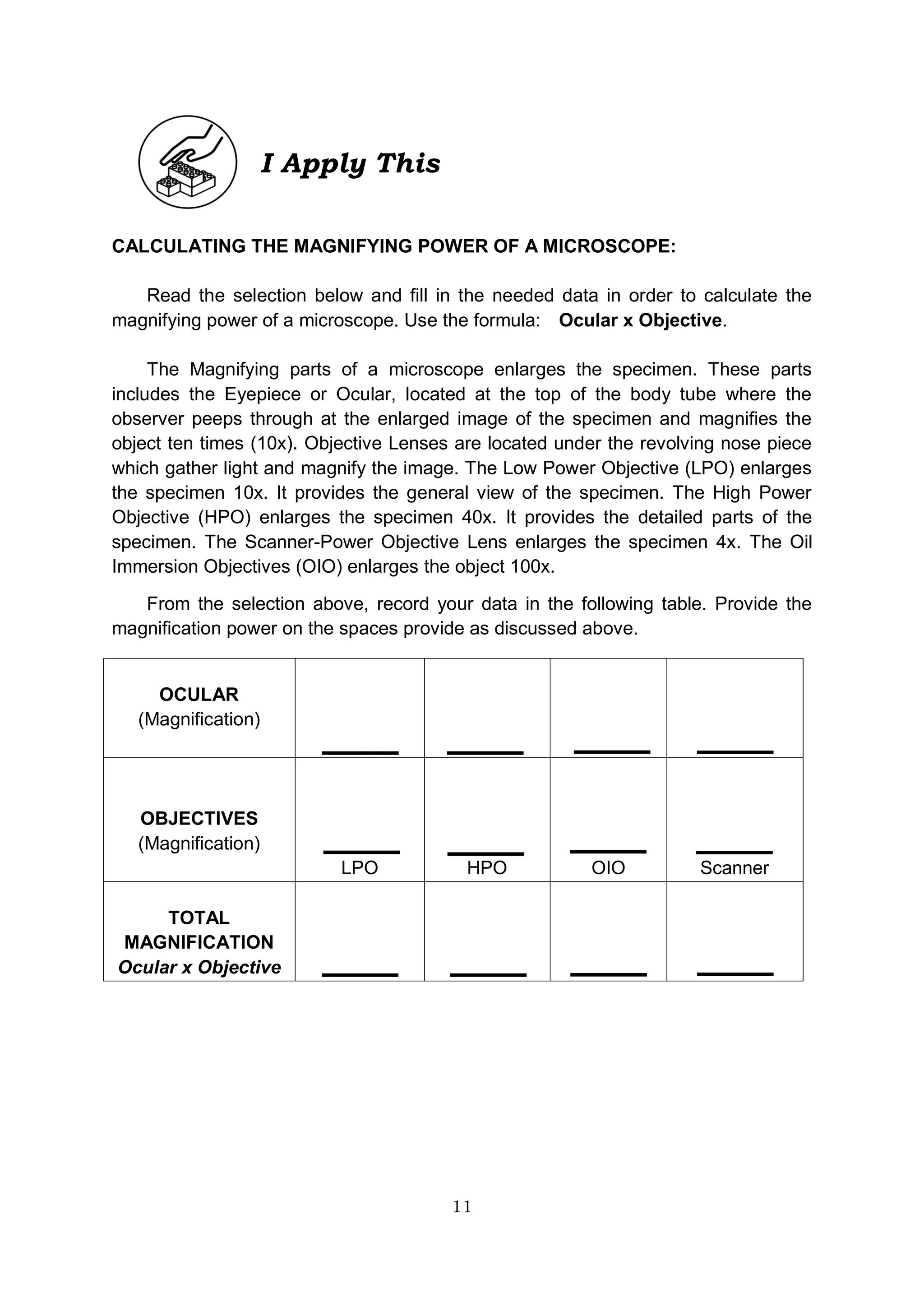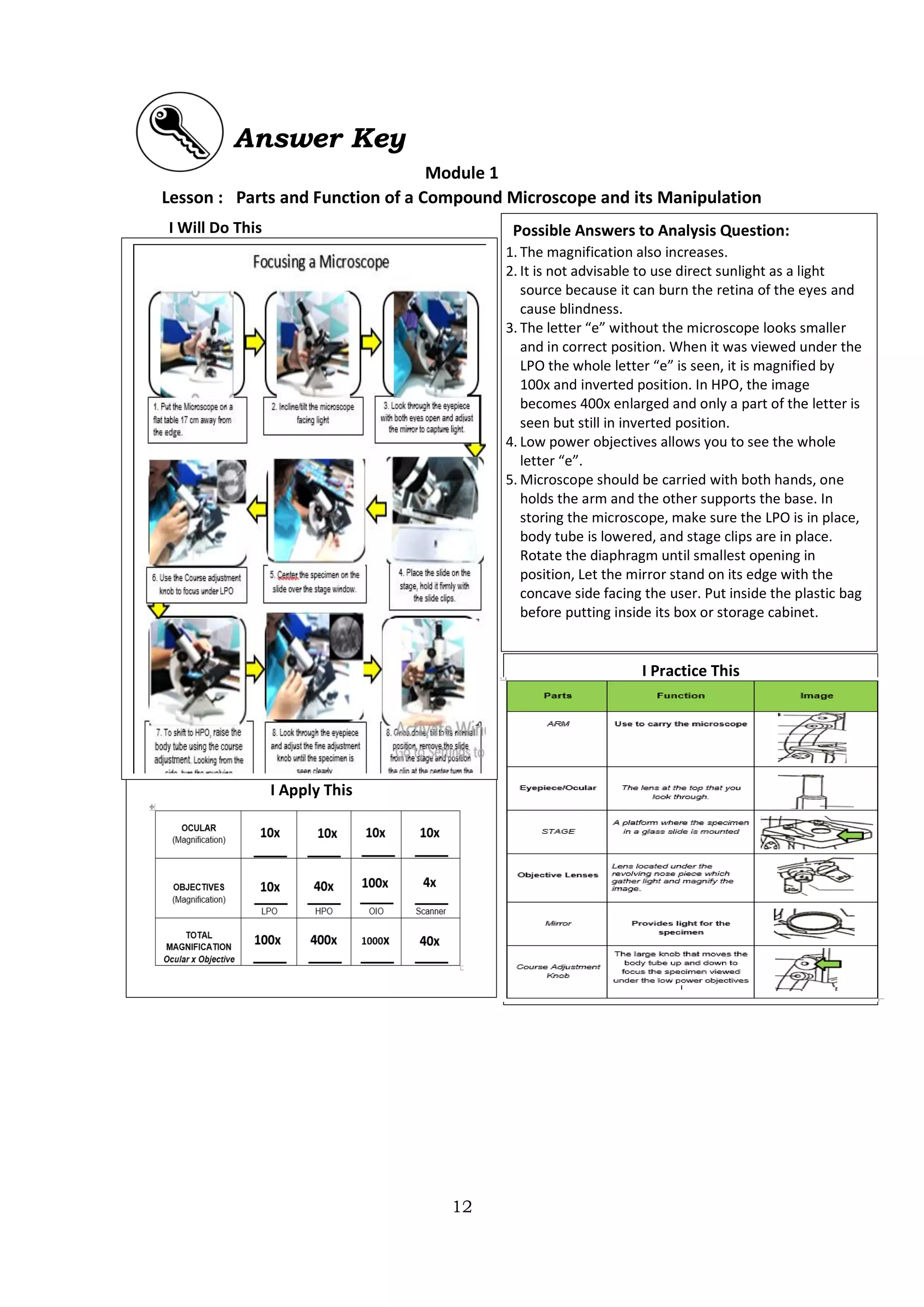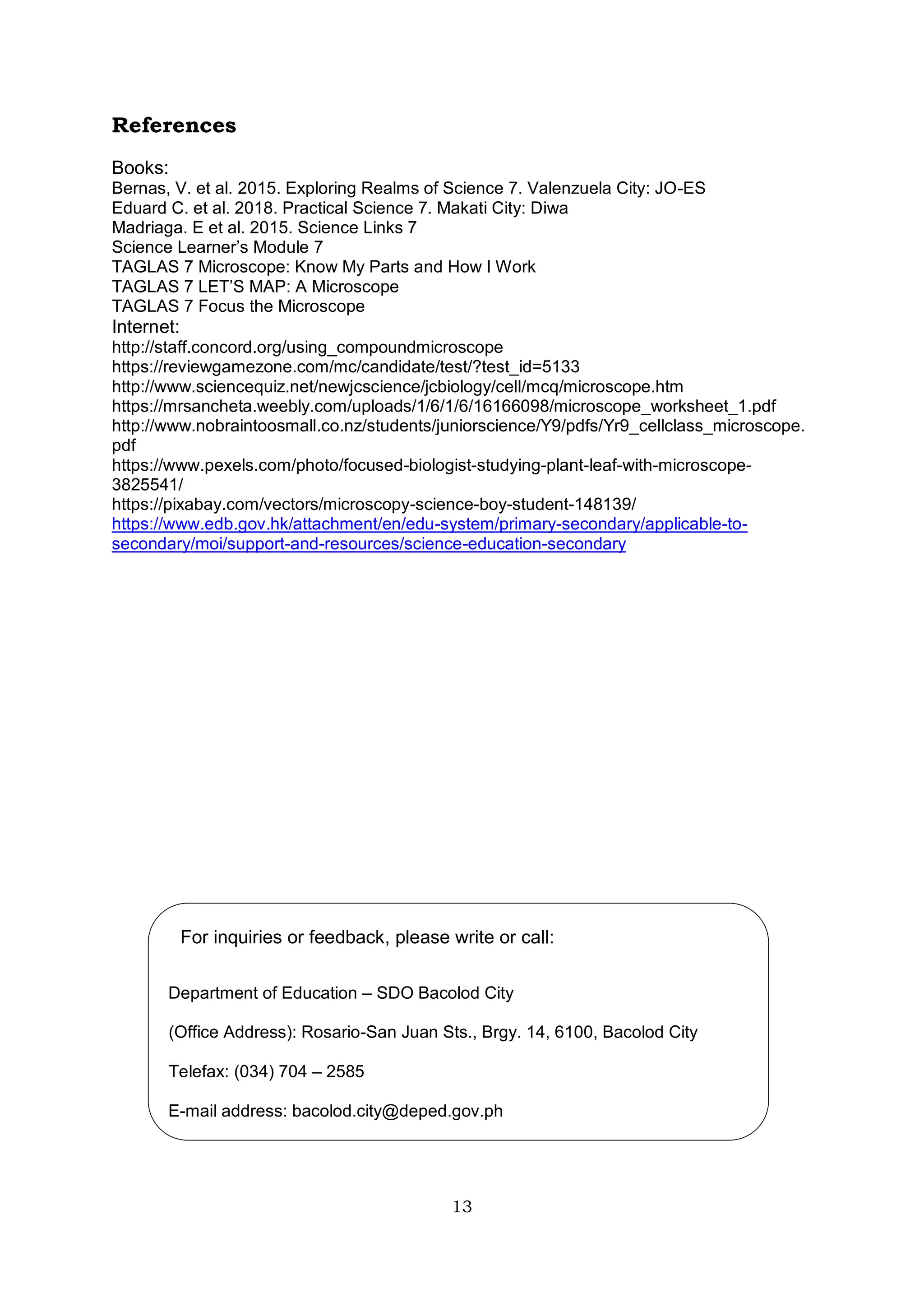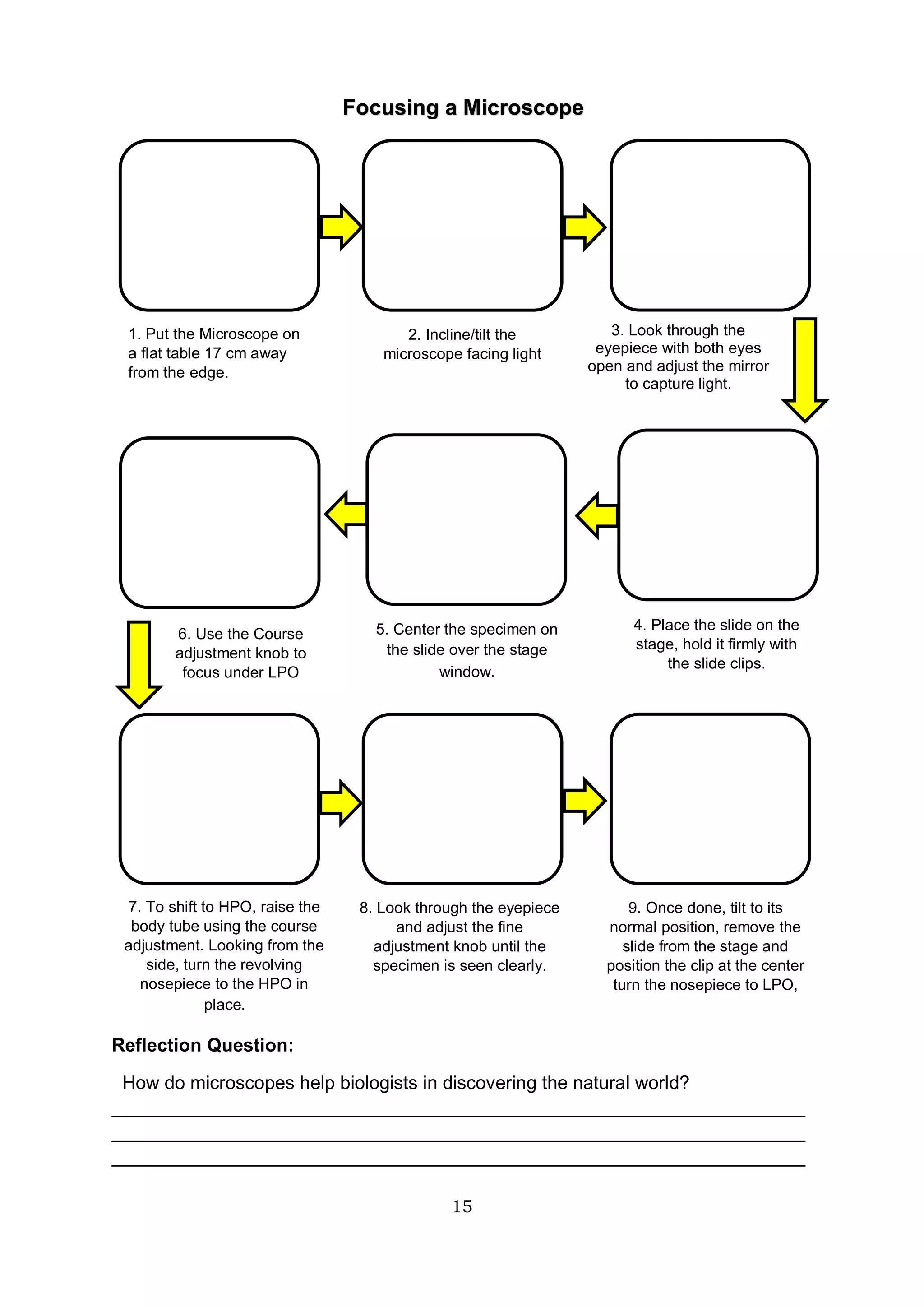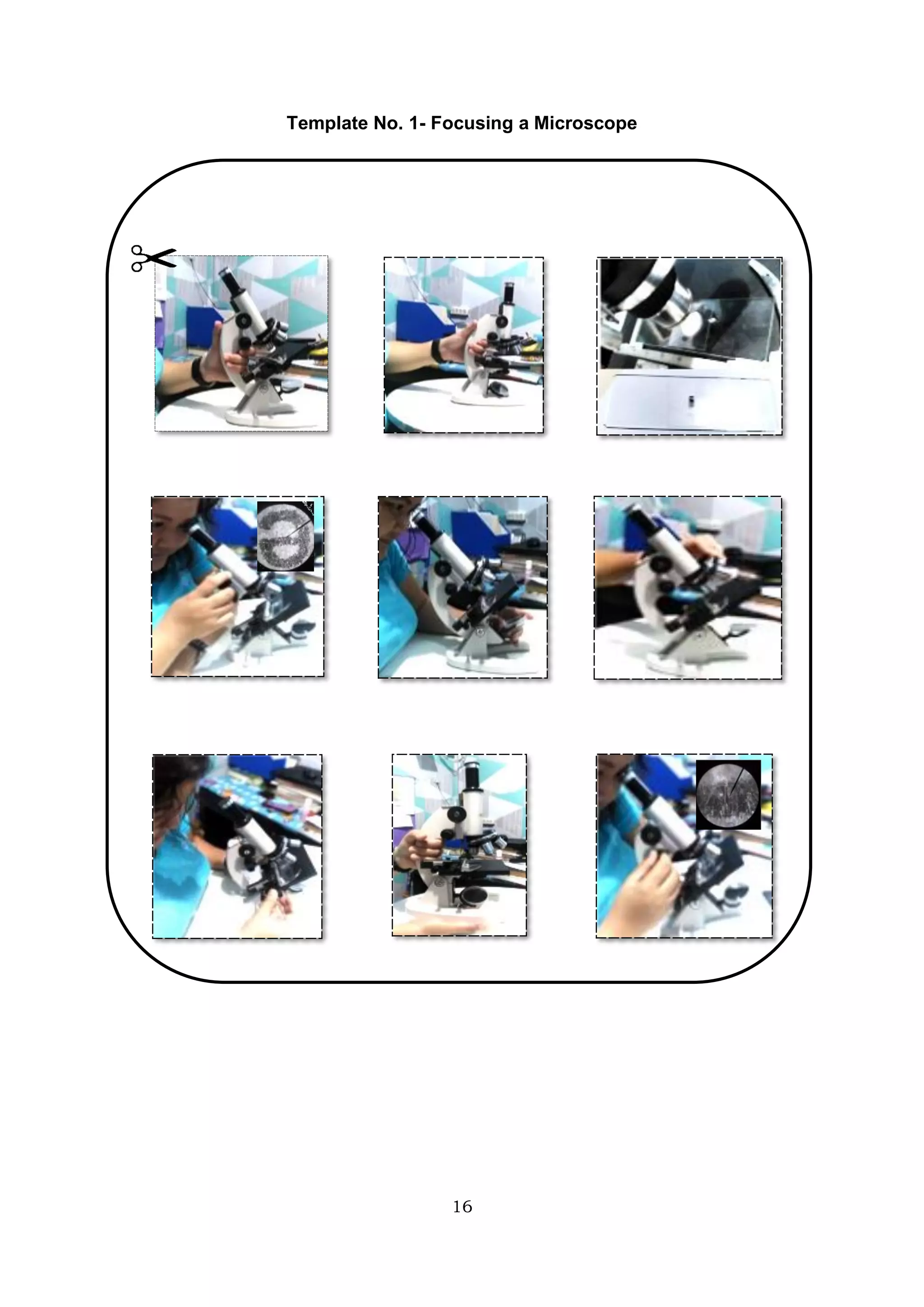The document provides instructions for using a compound microscope, including:
1) Identifying the main parts of the microscope and their functions, such as the eyepiece for magnification and the objectives for further magnification.
2) Describing techniques for focusing a microscope, such as using the coarse adjustment knob to move the body tube and fine adjustment knob for finer focus.
3) Explaining how to calculate magnification by multiplying the eyepiece magnification by the objective magnification, such as getting 100x magnification using a 10x eyepiece and 10x objective.
